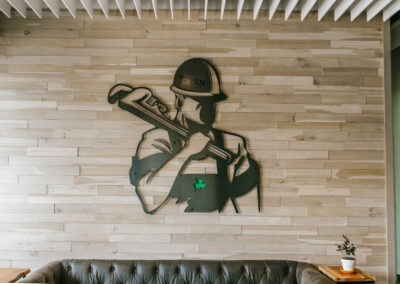Fire protection and safety are important elements for all those involved in hospitals and other healthcare facilities. We gathered some frequently asked questions and important items to consider when planning and implementing fire safety procedures for a healthcare facility. Whether you are new to hospital fire safety or looking for some extra fire safety tips in your healthcare facility, this is the article for you.
Are all my fire extinguishers where they are supposed to be?
Fire extinguishers need to be readily accessible in the event of a fire. While Joint Commission Inspection (JCO) and Accreditation Commission for Health Care (ACHC) don’t verify that the placement of fire extinguishers meet the code requirements for installation, it is very easy to notice one missing from a cabinet or a hook on a wall during an inspection.
It’s important for healthcare facilities to have good inventory and know where all extinguishers are located. Oftentimes we find that extinguishers were moved to facilitate a different task and then never moved back, thus causing an issue during the inspection. Having a good inventory, an updated map, an effective training plan, and monthly inspections in place can help prevent that issue from happening.
I get my fire system inspected each year by a qualified contractor, is that enough? How do I know if I am doing all the inspections required per NFPA 25?
There are a lot of additional inspections that are required that get easily overlooked by building owners and contractors, but do not get missed by JCO or ACHC inspectors during the accreditation inspection. There are specific requirements for different types of systems. Some systems need to have a more invasive inspection every 3 or 5 years, along with sprinkler heads needing to be tested every 10, 20, or 50 years depending on the type of head. These inspections can be costly and often need to be budgeted and planned for in advance. High level service providers will educate and provide their customers with thorough planning and inspections to avoid such issues.
What information is necessary for the Joint Commission to have in The Life Safety portion of their survey?
This portion of their survey is put in place to focus on and ensure the safety of your building for both patients and staff. For more detailed information, be sure to review the Building Tour Guidance document which highlights specific items that surveyors will be assessing.
Other Fire Safety Tips When Maintaining A Hospital
- Have a good training program in place for all hospital staff members on proper storage and usage of fire extinguishers.
- Establish and practice healthcare facility evacuation plans and fire drills.
- Monitor the kitchens in the facility, especially during meal prep times.
- Keep all exit doors, evacuation routes and pathways clear and free of blockage.
- Make sure staff members know where to find fire alarms and how to activate them.
- Educate staff members on how to keep patients safe in case of a fire. Being able to move them quickly and safely is key during an emergency.
Preventing fires and keeping people safe in healthcare facilities is imperative and at Ryan Fireprotection, we make it a priority to create and maintain fire protection solutions for our customers. If you are looking for or are in need of different training programs to help educate you or your team, check out our upcoming training events. For more information on fire safety and prevention for healthcare facilities, and to view projects we’ve worked on, visit our website or contact us today – we’re here to help!

